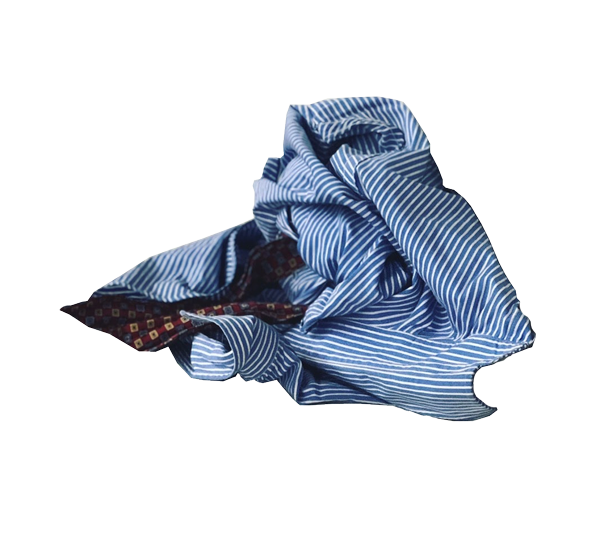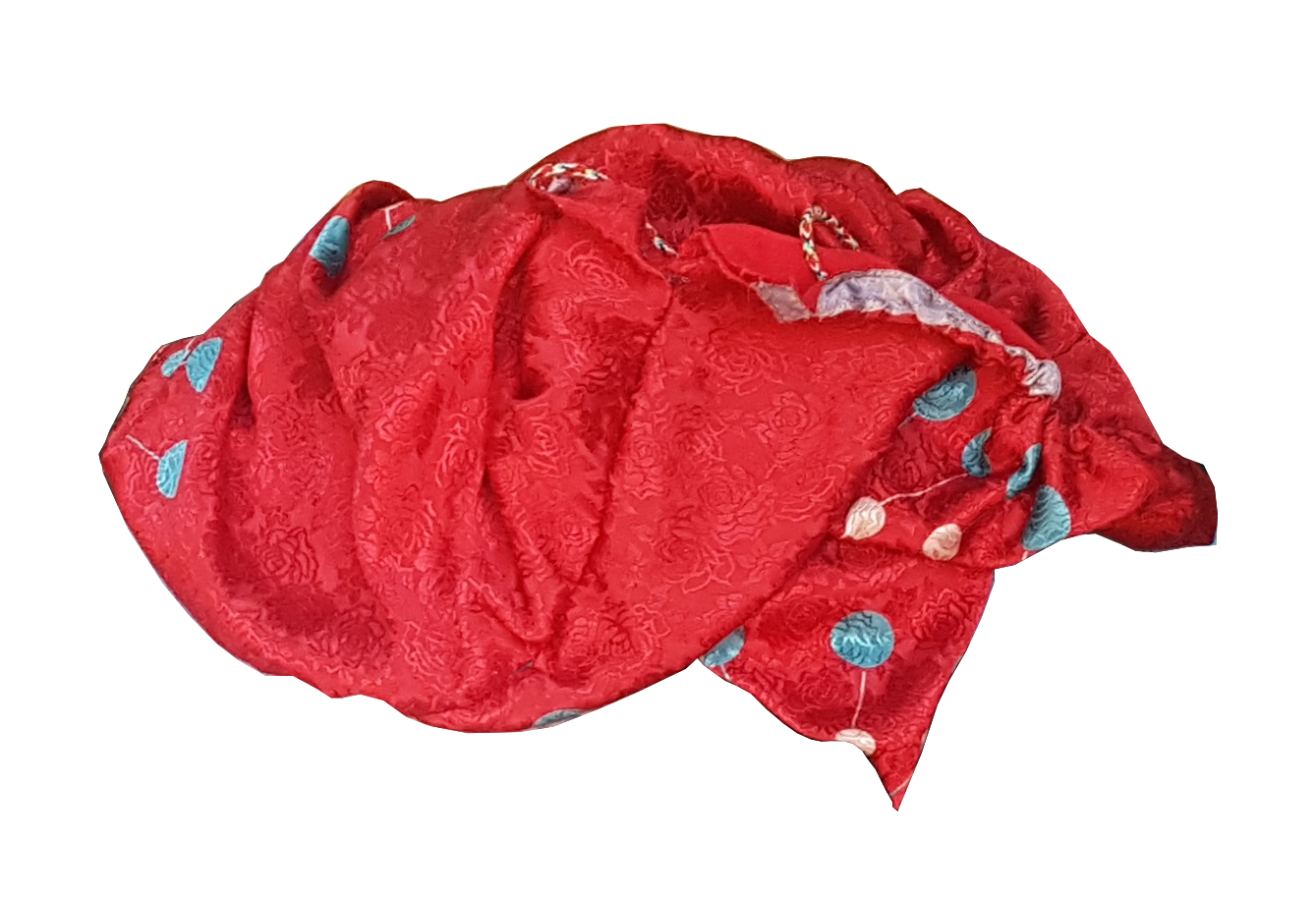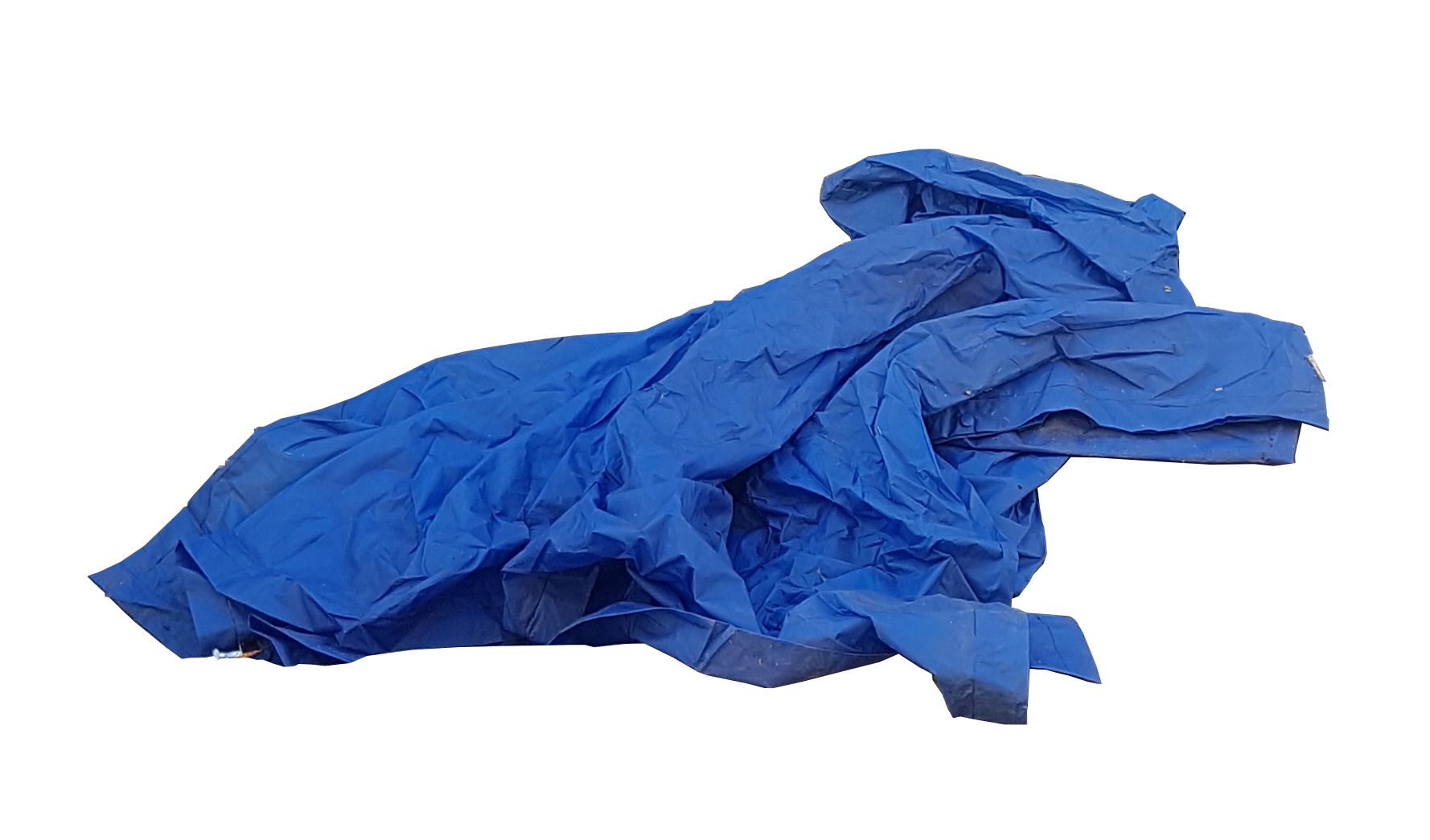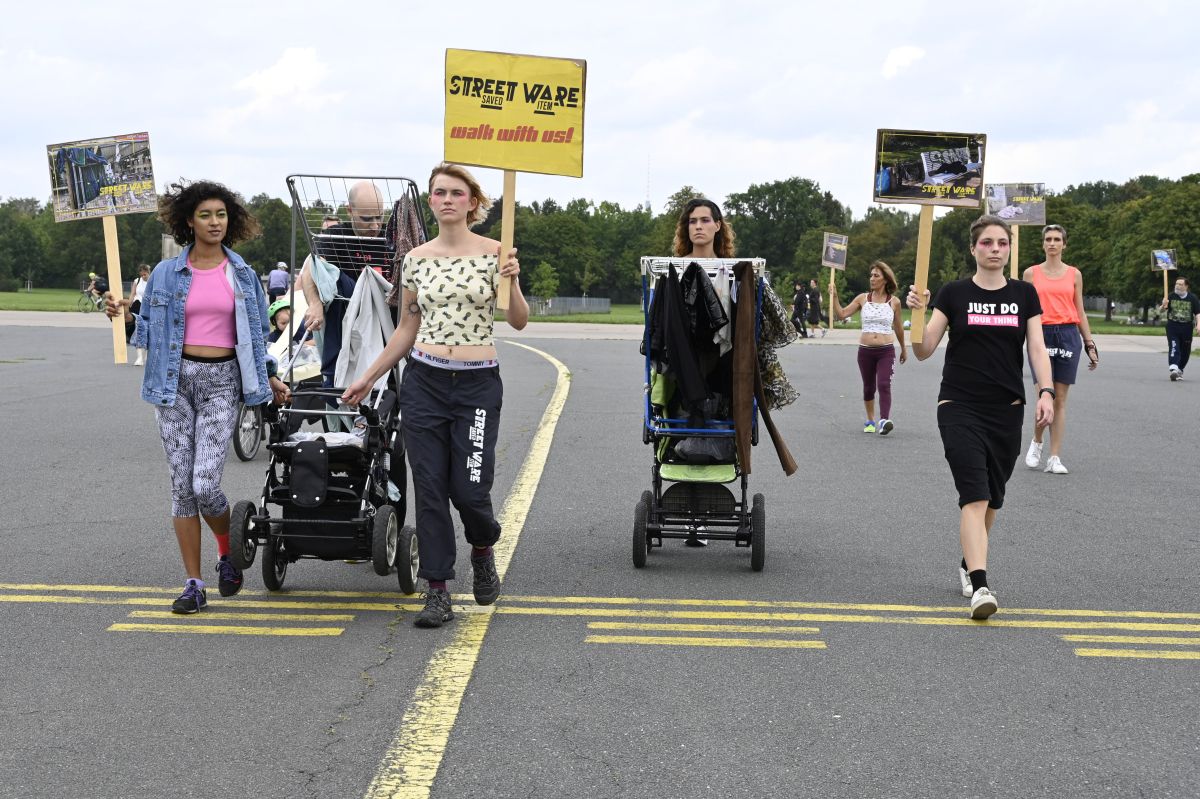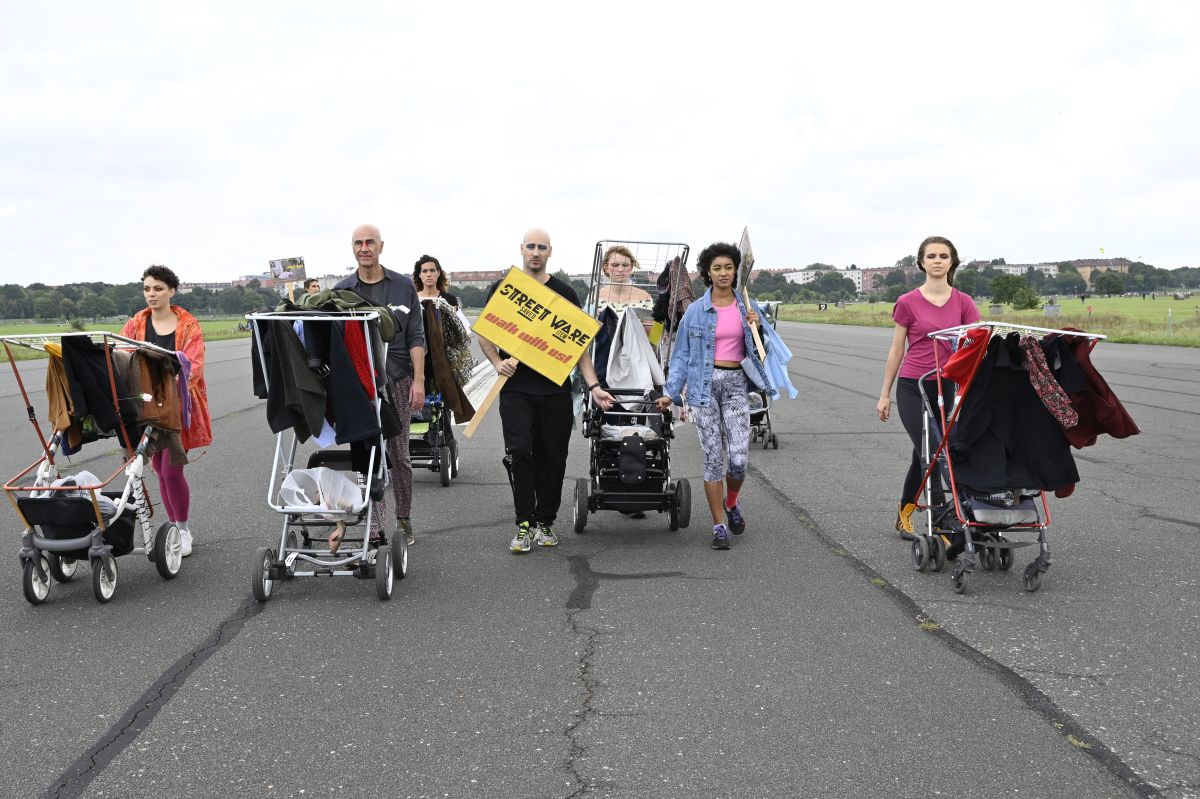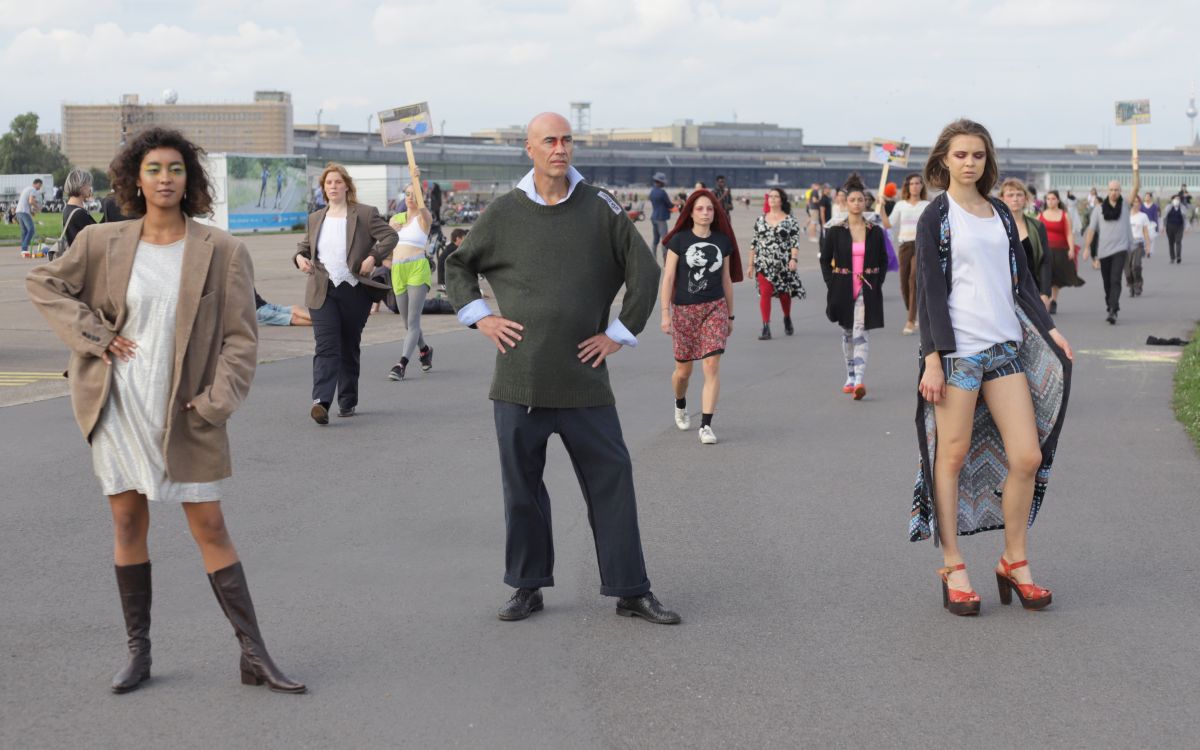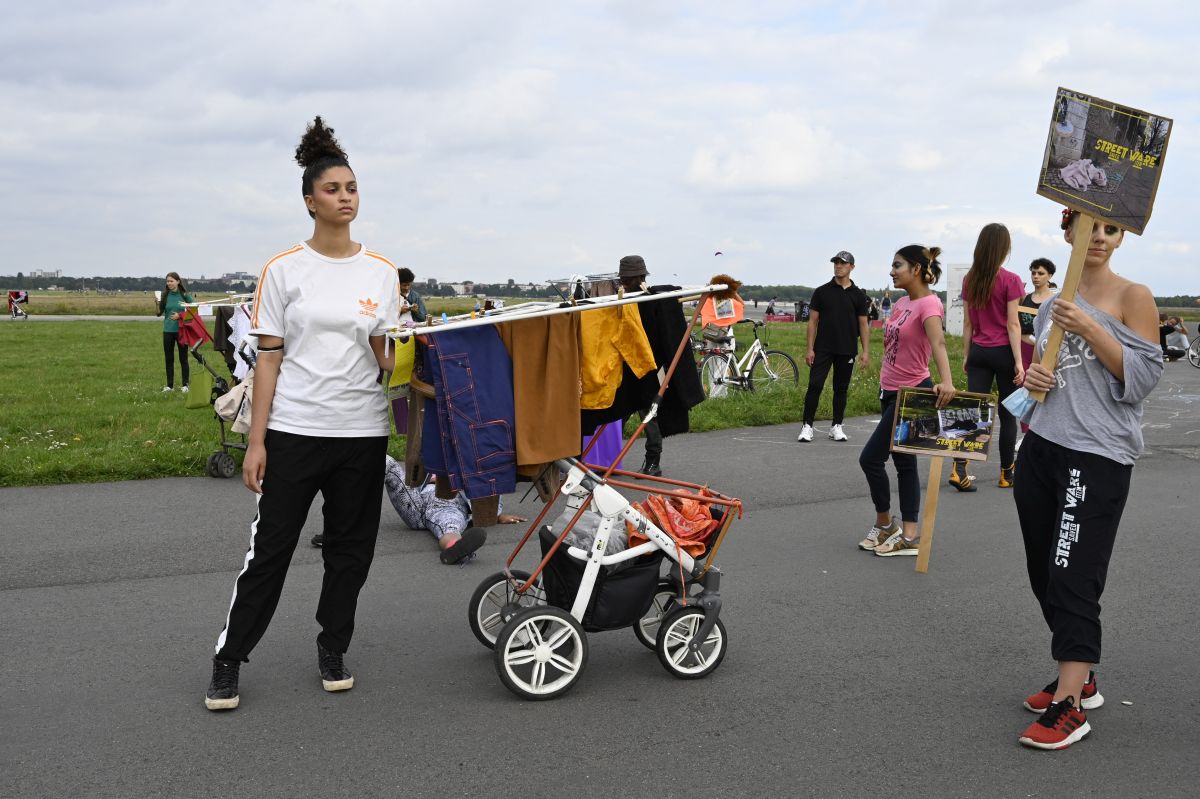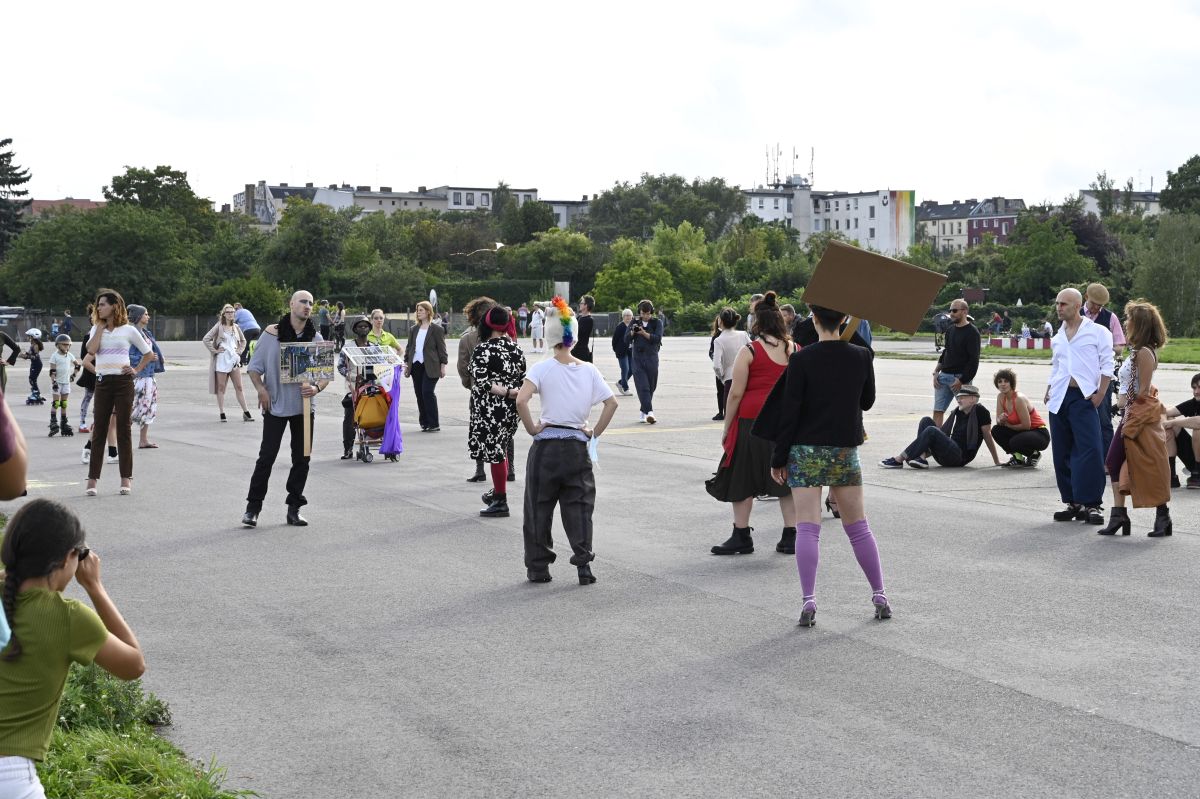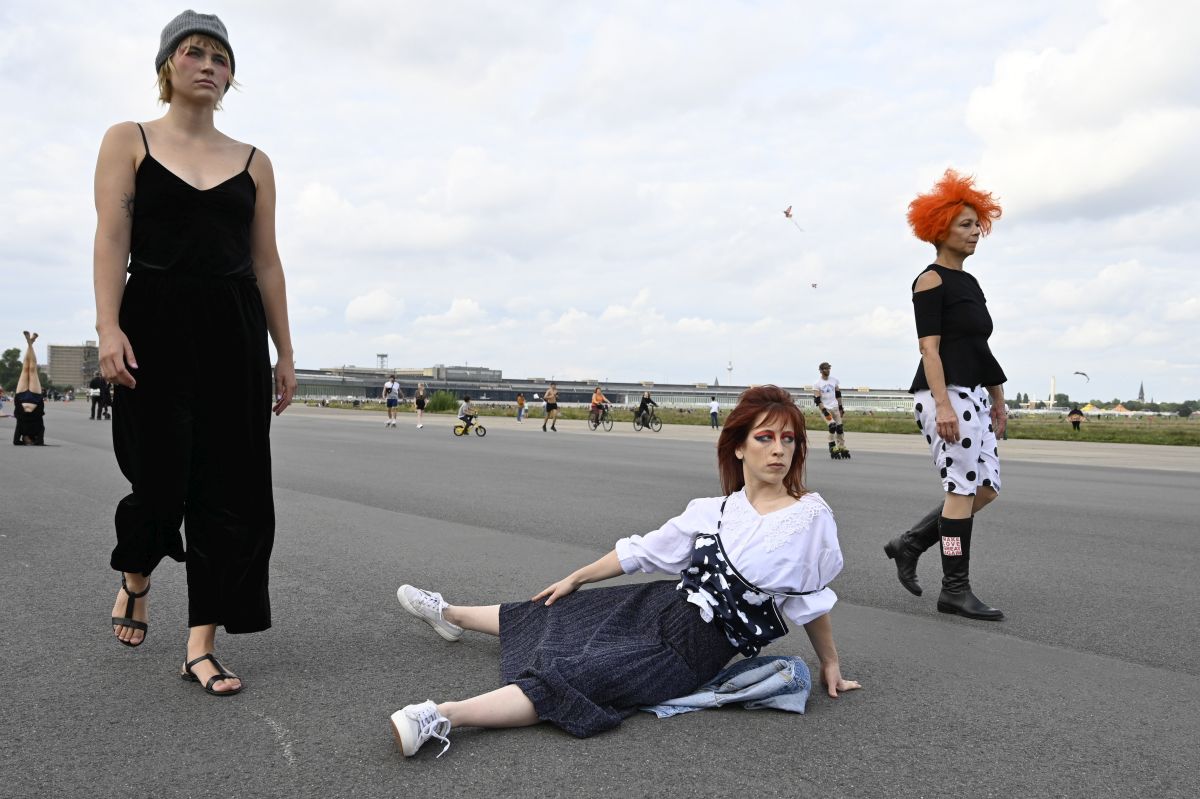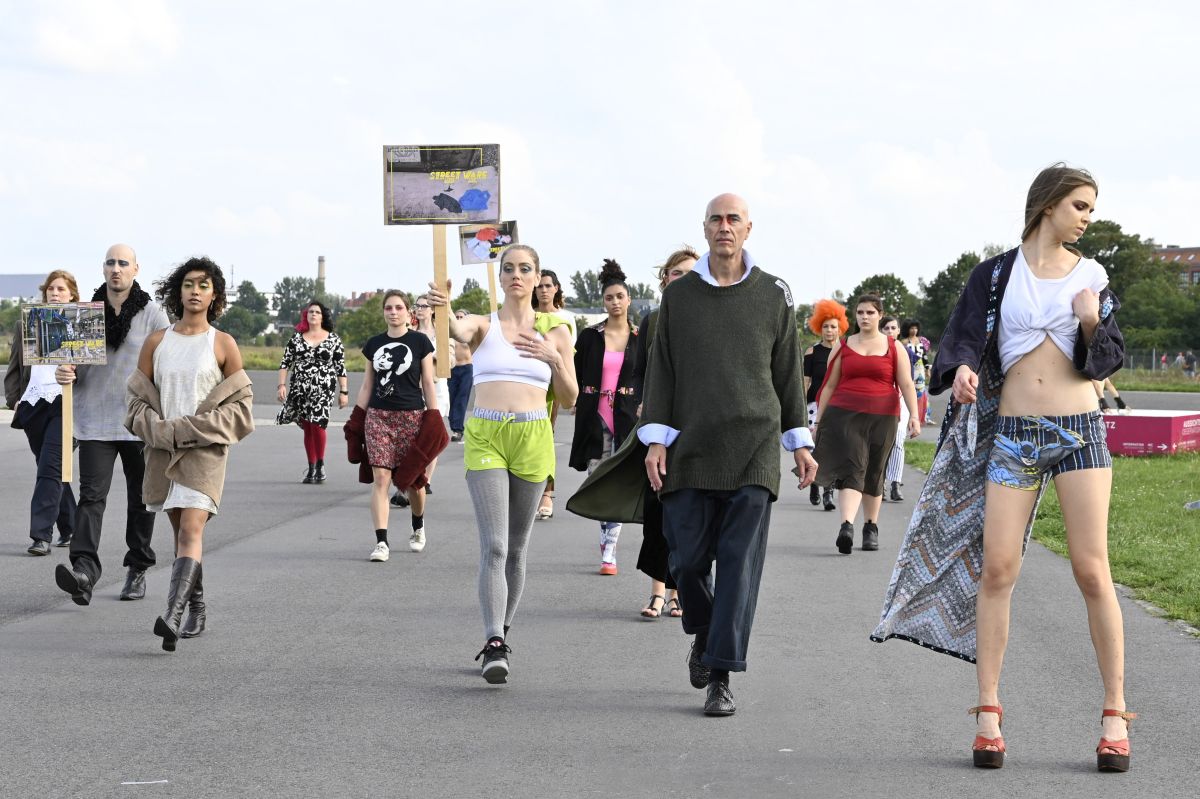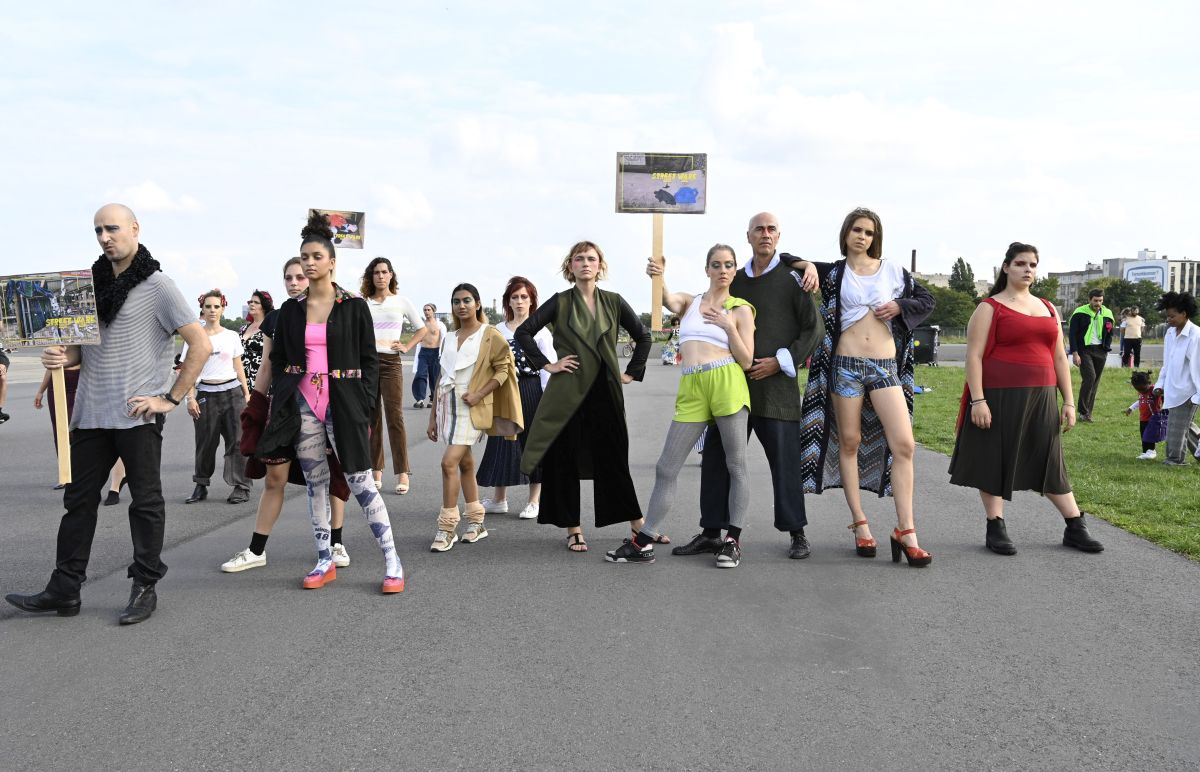Aïcha Abbadi
CW 36 + 37
Field Work
In close proximity and yet in an entirely different world, an offsite fashion show is in the making on Tempelhof Field while an art and fashion fair is taking place inside the former airport.
Taking place within the city’s fashion week time frame, STREETWARE’S open air catwalk nonetheless operates within another temporal reality. Its clotheshorses on wheels are scattered in between families on picnic blankets gathered for a kite festivity, models walking undeterred through the paths of rollerbladers and skaters. Voices are muffled by the wind as different sources of music are transported in waves across the field. A van with three police officers stands by and quietly observes. The models are made up of performers, students and local neighbours. They are gettng changed, wearing outfits styled for them but in which they also had a say. The youngest, Marianna, is only one year old.
Her mother, Sara, is also excited about her own first time modelling, although she notes that if she would continue doing it, she would have to buy herself a mirror, as she does not own one. Some finishing touches of hair and make-up are being added and the choreography rehearsed. Friends brought as support are waiting in anticipation, the first passersby curiously stopping in their tracks.
They demonstrated for fashion standards of a fairer future and as a contribution to the debate on body image and aesthetics: Manuela Coelho | Marlene Sommer | NavaNaimaPan | Nazanin Shamloo | Nomadin der Lüfte |Pauli | Philairone | Purvi Dhrangaderiya | Sara Tivane | Sarah Nevada Grether | Sophie Stolle | Zohara © Anja Grabert and Paolo Gallo
Learning about the concept behind the show, made up entirely by STREETWARE items, conversations about their own clothes unfold within the public. A group of friends and siblings, following sustainable stylist Mo Latif’s invitation, discusses the special bond created by garments shared with one another and passed on to someone close.
“I don’t know why but it actually makes me happier gettng it this way than buying it new.”
“Also because you have a connection with the person.”
“A deep connection, deep connection – she’s wearing a part of me, bringing a little part of me every day.”
In conversation with front-row guests .
Even though most of the show’s guest at first describe themselves as not very knowledgeable about fashion, it turns out that among them are former models, fashion designers, stylists, costume makers and sewing enthusiasts. Many are wearing garments which they have sewn or altered from second-hand pieces themselves, although one confesses to a passion to online shopping and trying out new styles found on online blogs. For those having moved to Berlin from abroad, the city has created a shiS in mindset, described as having a more conscious approach to fashion, with swaps and second-hand pieces part of the experience of living here.
One skater, at first irritated by the models in her way, becomes enthusiastic as she learns more about the background. It turns out she used to be a fashion designer but stopped working in the industry many years earlier due to its lack of fair practices. Not far away from her, another designer, VICENTE relates that it was at around the time she stopped that he really started. All the pieces he makes are one-of-a-kind, from up-cycled materials, which he has done so from the beginning.
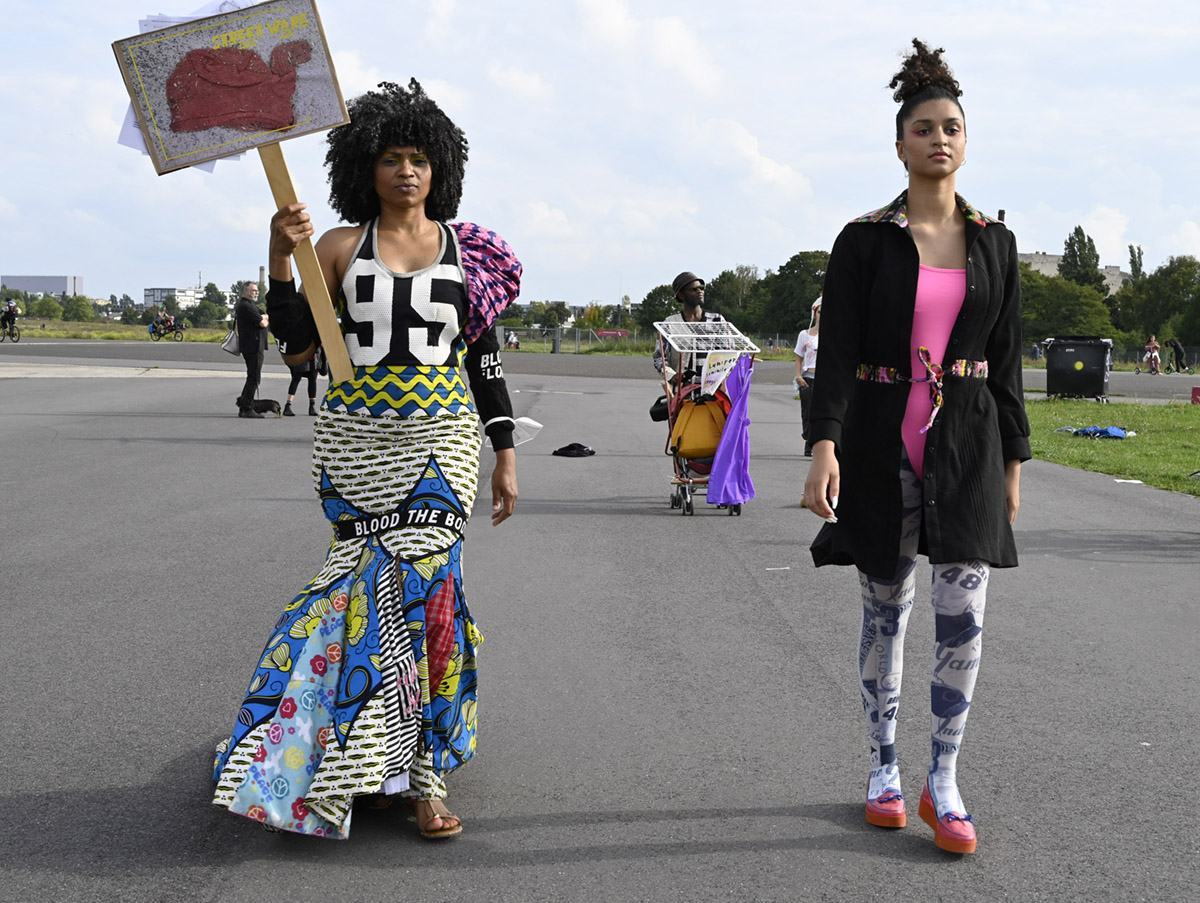
Manuela Coelho presenting, poltical haute couture‘ by Ruth Faith Nalule | Geneviève © Anja Grabert
Manuela, modelling “the dress” from Uganda, relates a special connection to the garment which she describes as carrying the baggage of history and containing a piece of all corners of the world. Coming from Mozambique and having seen the consequences of textile waste firsthand, wearing the dress means more to her than just presenting it: she wishes to create awareness about the social and ecological consequences of fashion, as well as set an example for her children. Since growing up in wartime Mozambique, she has always been tending to garments, tailoring and repairing them to make them last longer, passing along those values in the family. Her daughter also walks in the show and as Manuela passes on the dress to her, it becomes a symbolic statement of passing on the future to the next generation.
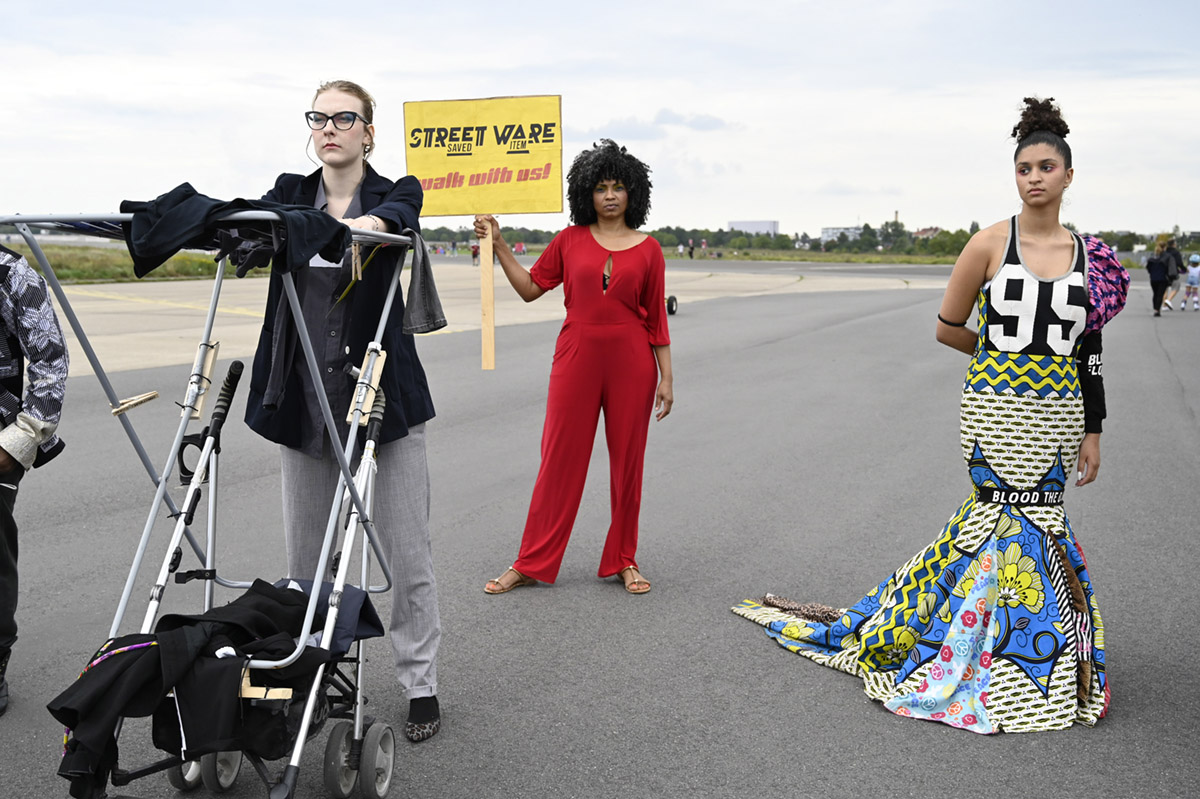
Laura Marie Gruch | Manuela Coelho | Geneviève presenting, poltical haute couture‘ by Ruth Faith Nalule © Anja Grabert
As the catwalk show comes to its finale in a tableau with everyone involved, it generates even more attention. Those distracted up to that point with their own recreational activities, quickly note down further information as they learn the shown pieces are made available for rental the week after. The VESTITHEK, located in Neukölln’s Helene-NathanLibrary, on one of the top floors of a shopping arcade and well integrated between shelves filled with books and music albums, follows in the tradition of clothes lending libraries which have emerged in various locations. Among the first professionally run ones in Europe was Lånegarderoben, which opened in Stockholm in 2010. While most of them operate in individual shop spaces or community centres, the VESTITHEK’s integration into the municipal library opens up the concept to new publics. Appearing as if it had always been there, it merges old and new habits, starting a discussion by merely being present.

